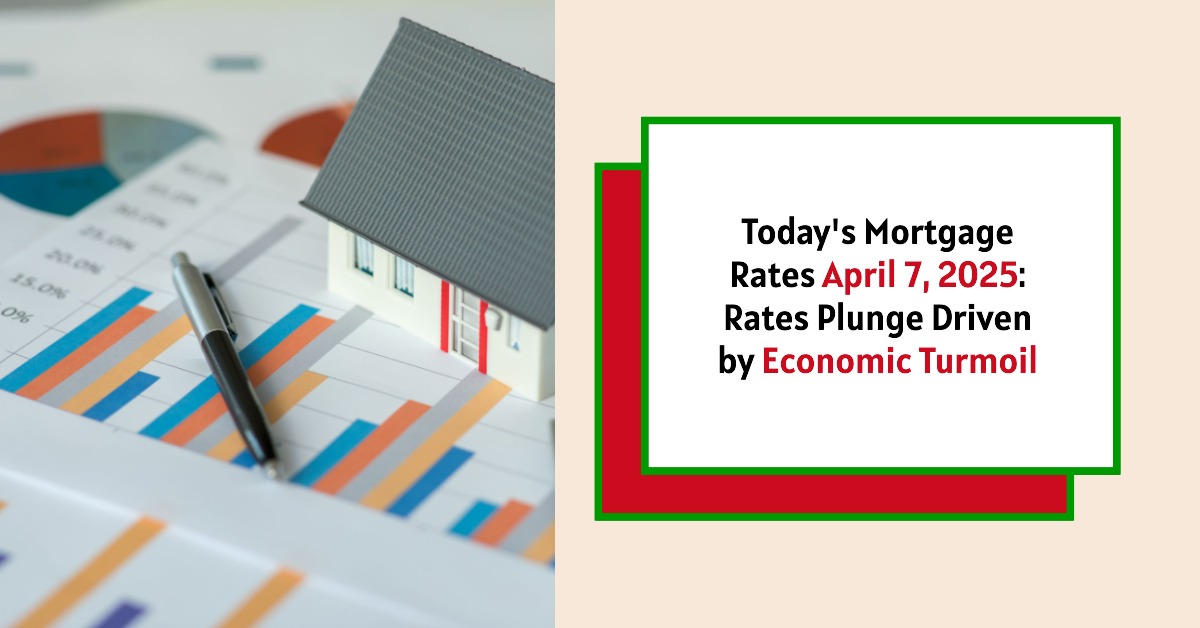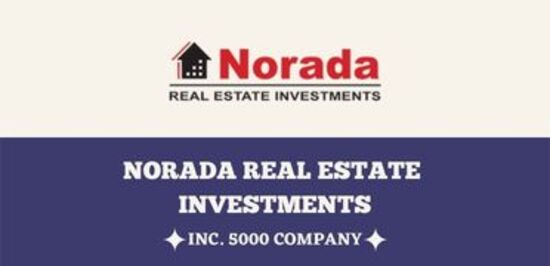As of April 7, 2025, today's mortgage rates have decreased significantly. According to Zillow, the average 30-year fixed mortgage rate now stands at 6.39%, down by 20 basis points since last week. The 15-year fixed mortgage rate has also fallen, dropping 19 basis points to 5.72%. This downward trend in mortgage rates presents an opportunity for prospective homebuyers and current homeowners looking to refinance, especially as the spring home-buying season approaches and more homes become available on the market.
Today's Mortgage Rates April 7, 2025: Rates Plunge Driven by Economic Turmoil
Key Takeaways
- Mortgage Rates Decline: Average 30-year fixed rates are now at 6.39%.
- Refinance Rates also Drop: Average refinance rates for 30-year loans are at 6.43%.
- Impact of Economic Factors: Recent tariff announcements and economic fluctuations influence these rates.
- Spring Home-Buying Season: The current market conditions could favor buyers as more homes are listed for sale.
Current Mortgage Rates
To give you a clearer picture of where the mortgage rates stand today, here’s a comprehensive list based on the latest data from Zillow.
Mortgage Rates
| Type of Mortgage | Interest Rate (%) |
|---|---|
| 30-Year Fixed | 6.39 |
| 20-Year Fixed | 6.01 |
| 15-Year Fixed | 5.72 |
| 5/1 Adjustable Rate | 6.48 |
| 7/1 Adjustable Rate | 6.42 |
| 30-Year VA | 5.91 |
| 15-Year VA | 5.54 |
| 5/1 VA | 5.93 |
| 30-Year FHA | 5.95 |
| 5/1 FHA | 5.69 |
Current Refinance Rates
| Type of Refinance | Interest Rate (%) |
|---|---|
| 30-Year Fixed | 6.43 |
| 20-Year Fixed | 6.09 |
| 15-Year Fixed | 5.79 |
| 5/1 Adjustable Rate | 6.72 |
| 7/1 Adjustable Rate | 6.68 |
| 30-Year VA | 5.99 |
| 15-Year VA | 5.83 |
| 5/1 VA | 5.94 |
| 30-Year FHA | 6.05 |
| 15-Year FHA | 5.62 |
| 5/1 FHA | 5.63 |
These figures represent national averages rounded to the nearest hundredth. Keep in mind that individual lender rates may vary.
The Context Behind Rate Changes
Mortgage rates are influenced by a variety of factors, including economic conditions, inflation rates, and government policies. In the past week, we have seen a notable decline in mortgage interest rates, translating into lower monthly payments for many potential homebuyers and those looking to refinance their existing loans.
The current drop in rates can largely be attributed to recent economic news, particularly concerning tariffs. Federal Reserve Chair Jerome Powell and other economic experts have expressed concerns over the possible impact of these tariffs on inflation and overall economic growth. As tariffs increase the prices of imported goods, it places pressure on consumers and could lead to higher inflation. This concern has caused a dip in investor confidence, resulting in lower yields on U.S. Treasury bonds, which often influences mortgage rates.
Fixed-Rate vs. Adjustable-Rate Mortgages
Choosing between a fixed-rate and an adjustable-rate mortgage (ARM) is a key decision for homebuyers. Here’s a look at the characteristics of each option and how they are priced currently:
- Fixed-Rate Mortgages:
These loans have a constant interest rate throughout the life of the loan, providing the borrower with predictable monthly payments. As of today, the average 30-year fixed-rate mortgage is at 6.39%. - Adjustable-Rate Mortgages:
Adjustable-rate mortgages, which can start with lower initial rates, have rates that may change after a specific period. A good example is the 5/1 ARM, which has a fixed rate for the first five years before adjusting annually. Currently, average rates for 5/1 ARMs stand at 6.48%.
Let’s take a more detailed look at the cost implications of these options when considering a $300,000 mortgage loan:
Example of Payment Calculations
- For a 30-Year Fixed Mortgage at 6.39%:
- Monthly Payment: Approximately $1,875
- Total Interest Paid Over 30 Years: Roughly $374,839
- For a 15-Year Fixed Mortgage at 5.72%:
- Monthly Payment: Approximately $2,486
- Total Interest Paid Over 15 Years: About $147,554
This comparison illustrates the different financial commitments involved with varying mortgage terms. Many buyers prefer the lower monthly payments of the 30-year mortgage, although they pay significantly more in interest over the term.
The Effect of Tariffs on Mortgage Rates
Recent announcements regarding tariffs have created ripples in the economy, leading to a complex relationship between economic indicators and mortgage rates. Although job growth in March 2025 was stronger than expected, which typically would exert upward pressure on interest rates, the looming uncertainty surrounding tariffs has overshadowed these positive signals.
Think of tariffs as taxes applied to imported goods. When the U.S. imposed tariffs, it prompted other countries, including major trading partners like China, to retaliate. This back-and-forth can induce economic slowdown fears, as the potential for a trade war escalates. Investors, in turn, often seek safety in U.S. Treasury bonds, which pushes bond yields down and subsequently lowers mortgage rates.
Understanding Current Economic Sentiment
The ongoing dichotomy between strong job metrics and trade uncertainty highlights the intricacies of economic forecasting. While a healthier job market might typically hint at rising inflation and increasing mortgage rates, the threats posed by tariffs may restrain lenders from raising rates aggressively.
What This Means for Homebuyers and Owners
For potential homebuyers, this decline in mortgage rates signifies a potential window of opportunity. Lower rates mean more affordable monthly payments and may increase the price range of homes you can consider. During the spring home-buying season, more homes are likely to enter the market, boosting options for buyers.
If you are already a homeowner, the current rates may make refinancing more appealing. Refinancing can lead to reduced monthly payments or help shorten the life of the loan, saving substantial amounts in interest over time.
Recommended Read:
Mortgage Rates Likely to Go Down in the Short Term Due to Tariffs
Mortgage Rates Trends as of April 6, 2025
Tariffs Push Mortgage Rates Down But Housing Costs Remain Record High
The Big Question: How Long Will This Trend Last?
Predicting the future of mortgage rates remains difficult due to various influencing factors. Here are a few critical areas to watch:
- Inflation vs. Economic Slowdown: Will the inflationary effects of tariffs outweigh the slowdown in economic growth? If significant inflation arises, the Federal Reserve may feel pressured to hike rates to mitigate its impact.
- Global Trade Relations: The reactions of other countries to U.S. tariffs can dramatically shape the economic landscape. If further retaliatory tariffs arise, this situation could put additional downward pressure on interest rates.
- Federal Reserve’s Response: The Fed’s decisions will depend heavily on upcoming economic data and interpretations of the risks posed by tariffs. Their moves significantly influence the broader interest rate environment, including mortgages.
Mortgage Payment Calculation Tools
Understanding how different mortgage terms and interest rates can affect your monthly payments is crucial. Several mortgage calculators available online, such as the Yahoo Finance mortgage calculator, can help you assess how varying terms or rates will impact your finances. These tools take factors like property taxes and homeowners insurance into account, which provides a more realistic estimation of your total monthly payment compared to just focusing on the principal and interest.
Summary:
As you evaluate mortgage options, consider working with lenders to secure the best rates. Typically, lenders offer lower rates to those with higher down payments, excellent credit scores, and low debt-to-income ratios. If you want to enhance your chances of getting a lower rate, it’s wise to save more, improve your credit score, or reduce your debt before applying for a mortgage.
The mortgage market continues to provide opportunities for homebuyers and owners looking to refinance, as rates are currently favorable. Understanding the economic factors influencing these rates fosters informed decision-making regarding home purchases and refinancing. Keep an eye on changes in economic conditions, as they will undoubtedly shape the mortgage landscape in the coming months.
Work With Norada, Your Trusted Source for
Real Estate Investment in the U.S.
Investing in turnkey real estate can help you secure consistent returns with fluctuating mortgage rates.
Expand your portfolio confidently, even in a shifting interest rate environment.
Speak with our expert investment counselors (No Obligation):
(800) 611-3060
Also Read:
- Will Mortgage Rates Go Down in 2025: Morgan Stanley's Forecast
- Expect High Mortgage Rates Until 2026: Fannie Mae's 2-Year Forecast
- Mortgage Rate Predictions 2025 from 4 Leading Housing Experts
- Mortgage Rates Forecast for the Next 3 Years: 2025 to 2027
- 30-Year Mortgage Rate Forecast for the Next 5 Years
- 15-Year Mortgage Rate Forecast for the Next 5 Years
- Why Are Mortgage Rates Going Up in 2025: Will Rates Drop?
- Why Are Mortgage Rates So High and Predictions for 2025
- Will Mortgage Rates Ever Be 3% Again in the Future?
- Mortgage Rates Predictions for Next 2 Years
- Mortgage Rate Predictions for Next 5 Years
- Mortgage Rate Predictions: Why 2% and 3% Rates are Out of Reach
- How Lower Mortgage Rates Can Save You Thousands?
- How to Get a Low Mortgage Interest Rate?
- Will Mortgage Rates Ever Be 4% Again?


